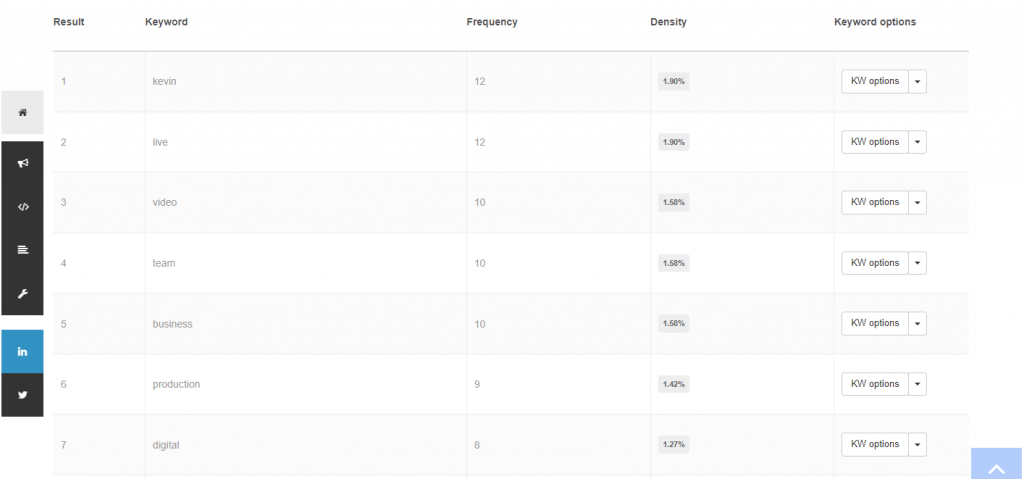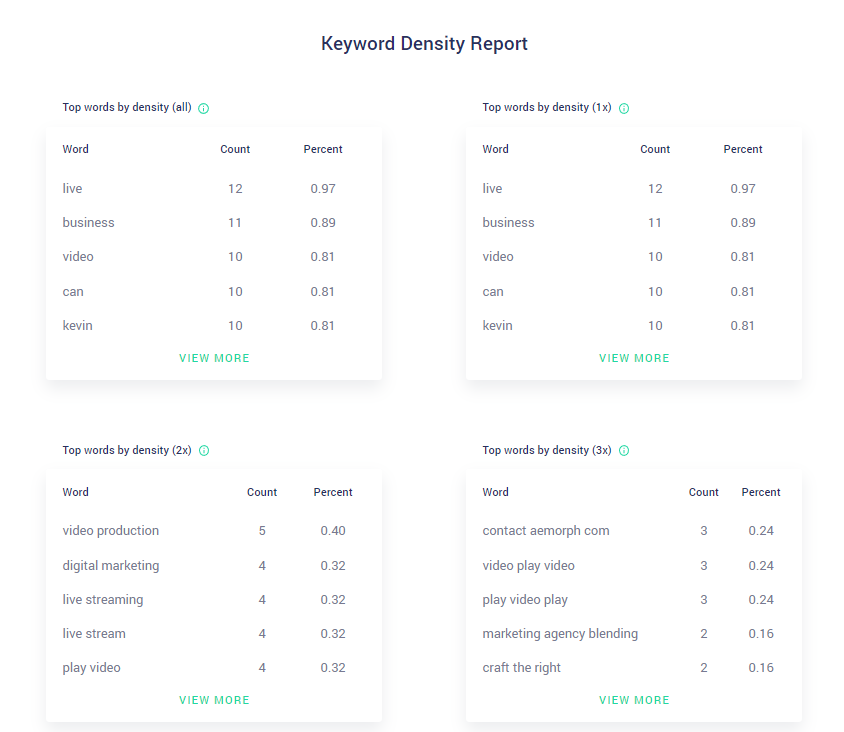If SEO is new to you, you might encounter the term “keyword density” thrown around a lot. But what does it actually mean? And how can you ensure that your blog posts and web pages use the ideal keyword density for your target audience? In this comprehensive guide, we will answer all your questions about keyword density and teach you to utilise it for your website’s search engine ranking.
What Is Keyword Density?
Keyword density, also known as “keyword frequency,” refers to the number of times a keyword is used based on the total word count on a page. It is a metric usually expressed as a percentage.
Keyword density is a way to monitor the balance in using the keywords to avoid hurting your ranking.
Why Is Keyword Density Important?
Keyword density is critical because it is one of the many factors that search engines use to determine the relevancy of a web page. If you stuff your content with too many keywords, it will be difficult for people to read and understand. This will not only turn off potential customers but also get you penalised by Google. On the other hand, if you don’t use enough keywords, your page may be lost among all the other internet pages that are using the same keywords.
Calculating Keyword Density
Refer to this formula on how to calculate a website’s keyword density.
Keyword Density = ( KR / ( TW -( KR x ( NWK-1 ) ) ) ) x 100
KR = number of times you repeated a key-phrases
NWK = number of words in your key-phrases
TW = total number of words in the analyzed text
Example
Let’s say if a blog post contains 1000 words and the keyword “SEO” appears five{5} times.
KR = 5
NWK = 1
TW = 1000
KD = ( KR / ( TW -( KR x ( NWK-1 ) ) ) ) x 100
KD = (5 / (1000 – (5 x (1-1)))) x 100
KD = (5 / (1000 – (5 x 0))) x 100
KD = (5 / (1000 – 0)) x 100
KD = (5 / 1000) x 100
KD = 0.005 x 100
KD = 0.5%
This means the blog post has a keyword density of 0.5%, which is between the Ideal Keyword Density.
What is the Ideal Keyword Density?
A great rule of thumb for good keyword density is to keep it between 0.5% and 1.75%. Anything higher than that, you run the risk of being penalised by search engines for “keyword stuffing,” and for anything lower, you may not be using the keyword enough to rank for it.
How to Improve Keyword Density?
If you want to improve your website’s keyword density, there are a few things you can do:
Use keyword variants of your focus key-phrase throughout your content. For example, if you’re trying to rank for the primary keyword “SEO tips,” you can also use phrases like “search engine optimisation tips” or “how to improve your SEO.”
Use related keywords/phrases. In addition to using keyword variants of your focus keywords, you can also use related keywords or phrases that are similar to your topical target keyword. For example, if you’re trying to rank for “SEO tips,” some related keywords you could use are “SEO tools,” “SEO strategies,” and “SEO trends.”
Use synonyms. Synonyms are words that have the same or similar meaning as your focus keyword. For example, if you’re trying to rank for “dog food,” some synonyms you could use are “dog food brands,” “dog food recipes,” and “best dog food.”
Use LSI keywords. LSI (latent semantic indexing) keywords are words or phrases related to your top keywords but aren’t necessarily synonyms. For example, if you’re trying to rank for “dog food,” some LSI keywords you could use are “dog nutrition,” “dog diet,” and “dog food ingredients.”
Use meta title and meta keyword tag. Your title and meta description are two of the most important places to use your focus keyword. This will help Google understand what your page is about and improve your chances of rankings for your given keyword.
Use keyword-rich alt text. You need to include keywords in the alt text of your website’s photos. This will help Google comprehend the image and increase your chances of ranking for the one word you choose.
Use keyword-rich heading and subheading tags. Splitting your contents into more manageable chunks, such as headings and subheadings is good for readability and a great way to include additional keywords.
Use keyword-rich anchor text. Whenever you link to another page on your website, make sure to use keywords in the anchor text. This will assist Google in understanding the linked page’s content and increase your chances of ranking for your target keyword.
Following these methods will drastically improve your website’s keyword density and start ranking higher on search engine results pages. Just be sure not to stuff your content with too many keywords, or you’ll risk being penalised by search engines.
What Is Keyword Stuffing?
The practice of shoving your website content with unnecessary keywords is called keyword stuffing. This can make your content hard to read, sounds unnatural and forced, and can get you penalised by Google. To avoid it, you need to be responsible for placing your keywords.
What Is Keyword Clustering?
Keyword clustering is an SEO technique that involves grouping together a series of related keywords and phrases in order to target a specific topic or theme. Keyword clustering is also sometimes referred to as “keyword grouping” or “keyword mapping.”
How to Use Keyword Clustering for SEO
There are countless ways how to optimize keyword clustering to improve your SEO. There are two(2) types of keyword clustering: soft and hard.
Tips for Improving your Website’s SEO with Keyword clustering
Categorize similar keywords
You can target a specific topic or theme with your content when you group similar keywords. E.g., if you are selling dog food, group keywords like “dog food brands,” “dog food recipes,” and “best dog food.”
Incorporate Pillar Pages in Keyword Clusters
After categorizing, you can formulate a guideline for your website’s content. To make your pillar pages, you need to understand the depth of the topic, the architectural information, and the page experience of your website. Then, your website will surely utilize on-page SEO best practices on every page.
Keyword Density Checker Tools
There are several different tools you can use to check the density of your keywords. Some of these keyword density tools are free tools, and it includes:
SEO Review Tools Keyword Density Checker

SEO Review is one of the popular SEO tools with a keyword density tool to identify the total number of keyword usage and keyword frequency. It is also a free tool.
To do a keyword density check, paste the URL of your site in the provided field. Make sure to complete the captcha code.

Once completed, you can now check how many times a keyword appears on your website.
Copywritely Keyword Density Checker

Copywritely is also one of the best keyword density checkers that many SEOs recommend that helps to identify how many keywords or even a specific keyword appears in your content.
To use their keyword density checker tool, paste the URL of your website.

Once completed, you can see how many words appear or how many times a keyword phrase shows on your site.
Conclusion
Keyword density is necessary for optimising your site for good search results. Overlooking this will result in a low-ranking website.
You can also use keyword clustering to improve your SEO. And finally, you can use several different keyword density checker tools to check the density of your keywords.




